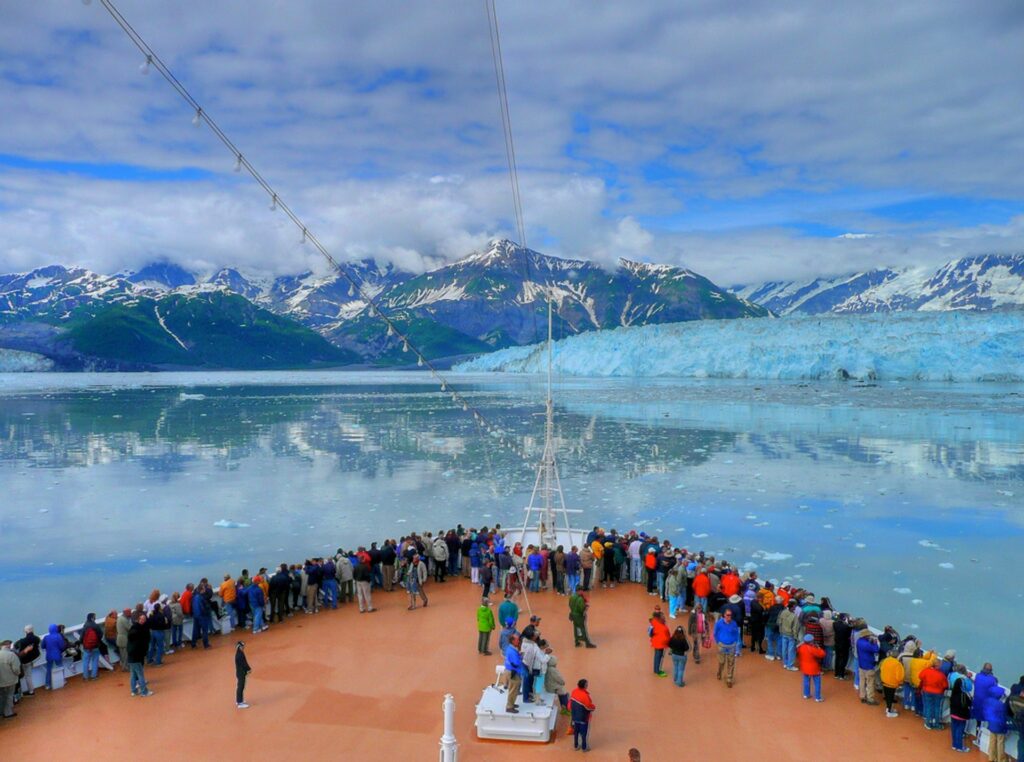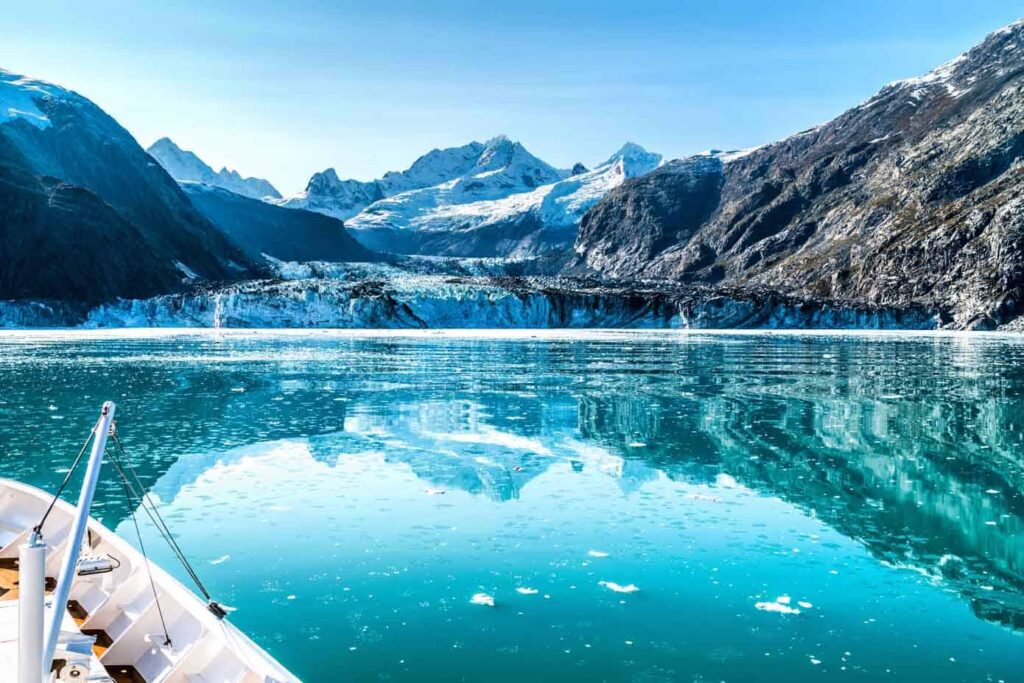Imagine embarking on an unforgettable Alaskan cruise, surrounded by breathtaking glaciers glistening under the Northern sun. However, a glimmer of concern creeps in as rumors spread about the disappearing glaciers. Will the magnificent ice formations that have captured the hearts of travelers for generations cease to exist? In this article, we explore this pressing issue and evaluate the ongoing impact of climate change on the majestic Alaskan glaciers that have long been the crown jewels of Alaskan cruises.

The Impact of Climate Change on Alaska’s Glaciers
Melting Glaciers and Climate Change
Climate change has become one of the most pressing global challenges of our time, with far-reaching consequences for our planet’s ecosystems. Alaska, renowned for its rugged wilderness and majestic ice formations, is not exempt from the effects of this phenomenon. The melting of glaciers in Alaska is a poignant example of the profound impact that climate change has on our environment.
Glaciers act as vital indicators of climate change, their retreat serving as a visible symbol of our ever-warming world. The melting glaciers in Alaska are a result of rising temperatures, triggered largely by human-induced greenhouse gas emissions. As greenhouse gases accumulate in the atmosphere, they trap heat and contribute to the overall warming of the planet. This increase in temperature leads to the accelerated melting of glaciers, a process that has been steadily underway in Alaska for decades.
Alaska’s Glaciers at Risk
Alaska is home to over 100,000 glaciers, which cover approximately five percent of the state’s land area. These magnificent ice formations, spanning vast expanses, are a significant part of Alaska’s natural heritage. However, the state’s glaciers are increasingly at risk due to climate change.
The impacts of melting glaciers in Alaska are manifold. As glaciers lose mass and retreat, they contribute to rising sea levels globally. This not only threatens coastal areas and low-lying communities but also has severe implications for wildlife dependent on these icy habitats. Additionally, the loss of glacial meltwater affects local ecosystems, disrupting natural processes and altering the delicate balance of Alaska’s environment.
Causes of Glacial Melting in Alaska
Several factors contribute to the melting of glaciers in Alaska. The primary driver is the increase in global temperatures resulting from the release of greenhouse gases into the atmosphere. The burning of fossil fuels, deforestation, and industrial activities are major contributors to these emissions.
In Alaska, the warming trend is amplified due to positive feedback loops. As glaciers melt, their exposed dark surfaces absorb more solar radiation, further accelerating the melting process. The loss of reflective ice cover reduces the Earth’s albedo, contributing to even higher temperatures and continuing the destructive cycle of glacial retreat.
Effects of Melting Glaciers on Alaska Cruises
Changing Glacial Landscape
One of the significant effects of melting glaciers in Alaska is the rapid alteration of the glacial landscape. Alaska cruises have traditionally offered breathtaking views of immense ice formations, often immersing travelers in a pristine environment seemingly untouched by time. However, as these glaciers melt, their once-spectacular features are progressively diminished.
The iconic tidewater glaciers, which dramatically calve massive icebergs into the sea, are receding at an alarming rate. This transformation robs visitors of witnessing the grandeur and power of nature in action. The vanishing glaciers also lead to a loss of navigable channels as icebergs melt and change the geography of the waterways, rendering some areas inaccessible.
Altering Wildlife Habitats
Glacial habitats harbor a diverse range of flora and fauna, many of which have become adapted to the specific conditions prevalent in these icy environments. The melting glaciers disrupt these habitats, causing ecosystem disturbances and potential harm to the wildlife that relies on them for survival.
Species such as seals, sea lions, and various bird species that depend on glacial ecosystems for feeding and breeding may face difficulties in finding suitable alternatives. The diminished availability of glacial meltwater also affects the freshwater availability for both terrestrial and aquatic species.
Decreasing Glacier Viewing Opportunities
As glaciers recede, the opportunities for visitors to witness their beauty up close diminish. The allure of Alaska cruises lies in part in observing the awe-inspiring glaciers and their dynamic nature. However, the ongoing loss of these ice formations reduces the chances for tourists to experience glacial wonders firsthand.
The impact is not only limited to tourists but also has economic repercussions for the cruise industry. With decreasing glacier viewing opportunities, cruise itineraries need to be adjusted, potentially leading to a decline in interest and reduced revenues. The need for proactive measures to address the challenges arising from melting glaciers is paramount.

The Future of Glaciers in Alaska
Projections for Glacial Melting
Scientists studying the impacts of climate change have made projections about the future of glaciers in Alaska. These predictions suggest that glacier mass loss will continue, accelerating the rate of glacial melting. As the Earth’s climate continues to warm, it is estimated that many glaciers in Alaska will eventually disappear entirely, transforming the state’s landscape irreversibly.
A study by the United States Geological Survey (USGS) estimates that if greenhouse gas emissions are not curbed, Alaska could lose over 75 percent of its glaciers by 2100. This dire scenario emphasizes the urgent need to address climate change before irreversible damage is done.
Impact on Alaska’s Tourism Industry
The melting glaciers in Alaska pose significant challenges for the state’s tourism industry. Alaska’s renowned cruises, which have long attracted nature enthusiasts and adventure seekers, rely heavily on the allure of glaciers. With the vanishing of these magnificent ice formations, the tourism industry faces the risk of declining interest and a potential decrease in visitor numbers.
The economic impact extends beyond the cruise industry, as many local businesses and communities rely on tourism dollars. The loss of glacial attractions may result in reduced revenue and job opportunities, exacerbating the challenges faced by Alaskan communities already grappling with the effects of climate change.
Reducing Carbon Emissions as a Solution
To protect Alaska’s glaciers and preserve this natural wonder for future generations, reducing carbon emissions is crucial. Transitioning to cleaner, renewable energy sources and implementing sustainable practices are central to mitigating the impacts of climate change.
Alaska can play a pivotal role in leading the way towards a more sustainable future. By promoting renewable energy development and investing in energy efficiency measures, the state can reduce its carbon footprint significantly. Additionally, advocating for climate change policies at the state and national levels can contribute to a broader shift towards a low-carbon economy.
Adapting to the Changing Environment
Implementing Sustainable Tourism Practices
In the face of glacial melting, the tourism industry in Alaska must adapt to the changing environment. Implementing sustainable tourism practices can help minimize the industry’s ecological footprint and mitigate the impacts on fragile ecosystems.
These practices could include promoting responsible travel behavior through education, encouraging waste reduction and recycling programs, and supporting local conservation efforts. By prioritizing environmentally friendly tourism practices, Alaska can ensure that the industry remains viable while safeguarding its natural heritage.
Embracing New Attractions
While the loss of glaciers is undoubtedly disheartening, Alaska can explore alternative attractions to maintain its appeal to tourists. The state boasts an abundance of other natural wonders, including pristine forests, idyllic coastal areas, and unique wildlife. By diversifying the tourist experience and highlighting these attractions, Alaska can continue to draw visitors while minimizing the negative effects of glacial retreat.
Promoting Environmental Education
Education is a powerful tool in combating climate change. By promoting environmental education, Alaska can raise awareness among tourists and locals alike about the importance of preserving the state’s natural environment. This understanding can inspire individuals to take action, make informed choices, and support sustainability initiatives.
Organizations, schools, and local communities can collaborate to develop educational programs that emphasize the fragility of Alaska’s glaciers and the broader implications of climate change. Through education, Alaska can foster a sense of responsibility and empower individuals to contribute to the preservation of its unique ecosystems.

The Role of Individual Responsibility
Reducing Personal Carbon Footprint
Individual actions play a crucial role in addressing climate change. By making conscious choices to reduce personal carbon footprints, we can all contribute to mitigating the impacts on Alaska’s glaciers and the wider environment. Simple steps such as conserving energy, using public transportation, and embracing renewable energy options can make a significant difference.
Supporting Conservation Organizations
Conservation organizations working to protect Alaska’s glaciers and ecosystems need support to carry out their vital work. By donating time, money, or resources to these organizations, individuals can help further their conservation efforts. These contributions can fund scientific research, habitat restoration projects, and public awareness campaigns aimed at preserving Alaska’s natural wonders.
Advocating for Climate Change Policies
Individuals also have the power to advocate for climate change policies at local, state, and national levels. By engaging with elected officials, participating in public forums, and joining grassroots movements, we can collectively push for meaningful action on climate change. By making our voices heard, we can encourage policymakers to prioritize sustainable practices, reduce greenhouse gas emissions, and protect Alaska’s glaciers.
Conclusion
The impact of climate change on Alaska’s glaciers is deeply concerning. The melting of these icy giants not only poses ecological threats but also has far-reaching consequences for Alaska’s tourism industry and local communities. Urgent action is needed to reduce carbon emissions and mitigate the effects of climate change.
Alaska must embrace sustainable tourism practices, diversify attractions, and promote environmental education to adapt to the changing environment. Individual responsibility plays a crucial role in preserving Alaska’s glaciers, from reducing personal carbon footprints to supporting conservation organizations and advocating for climate change policies.
By taking action at both individual and collective levels, we can strive towards a future where Alaska’s glaciers can continue to inspire and captivate us, preserving their beauty and significance for generations to come. Together, we can make a difference in safeguarding Alaska’s natural heritage and combating the effects of climate change.

Hi, I'm Mike, the author of Ocean Bliss Journeys. As the captain of this incredible website, my mission is to provide you with the ultimate sailing experience. Set sail on a journey of discovery with us and indulge in the perfect mix of adventure and relaxation. Our handpicked cruises offer unparalleled luxury and unforgettable destinations. From romantic getaways to family vacations and hidden gem exploration, I've carefully curated tailored packages to ensure every moment is cherished. So, join me and embark on your dream cruise today. Let's create memories that will last a lifetime.

